ATI Radeon HD 2900 XT: Calling a Spade a Spade
by Derek Wilson on May 14, 2007 12:04 PM EST- Posted in
- GPUs
AMD CFAA Performance and Image Quality
While we've already talked about CFAA, let's take a look at how it compares to other AA methods. We've already seen NVIDIA's CSAA in action, which is able to better determine how subsample colors should be weighted within a pixel. How does it stack up to AMD's tent filters? Let's take a look:
Zip file of uncropped JPG images (1.7MB)
Clearly CFAA does do a good job at reducing the impact of high contrast edges. As we mentioned before though, this doesn't come without drawbacks. Antialiasing shouldn't just filter out high frequency image data (which comes in the form of high contrast edges). The problem lies in the fact that some of these edges are supposed to be there.
Applying a blur to everything isn't the best general purpose answer. Ideally we want to balance eliminating high frequency data we don't want (aliased edges) while preserving the high frequency data we do want (fine grained detail in either geometry or interior textures). A balance needs to be kept here, and (as we've seen many times in the past) the answer for the end user can often be subjective.
This is certainly an interesting solution, but we will stick with simple 4x box filtered MSAA for our current and future tests as it still offers the best balance between image quality and performance - especially at very small pixel sizes. But before we leave the subject completely, let's take a look at how CFAA performs on R600. We'll compare it to all the non-transparent texture aware AA modes available on the X1950 XTX and 8800 GTS 640MB.
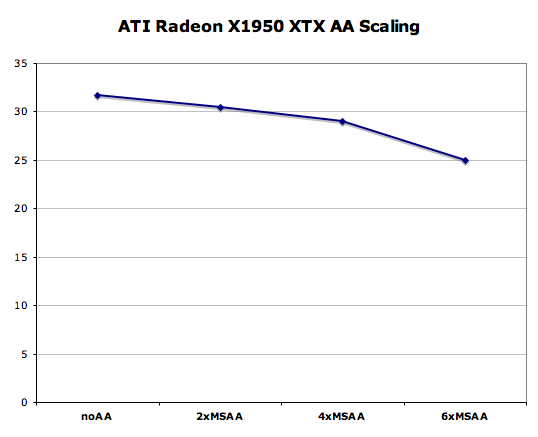
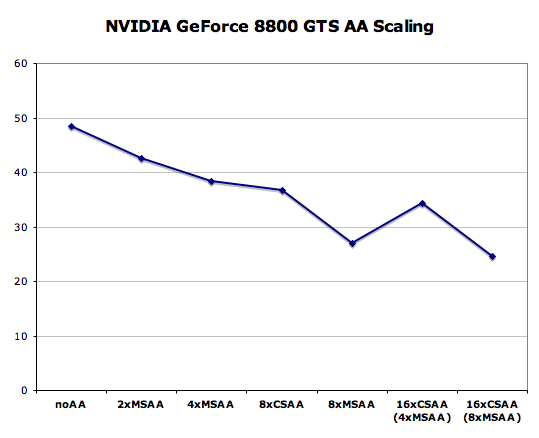
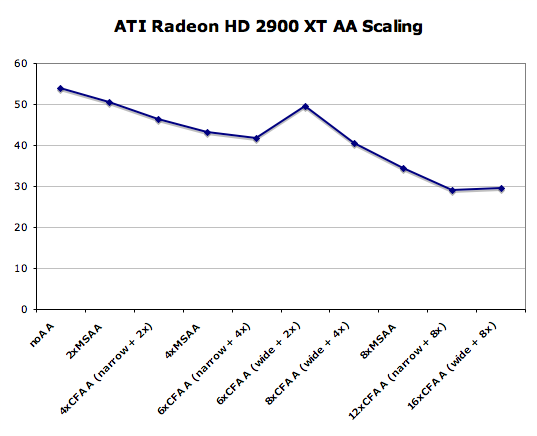


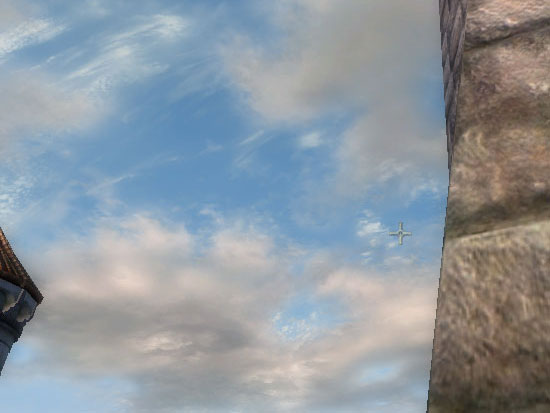
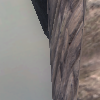









86 Comments
View All Comments
johnsonx - Monday, May 14, 2007 - link
and to which are you going to admit to?What was that old saying about glass houses and throwing stones? Shouldn't throw them in one? Definitely shouldn't them if you ARE one!
Puddleglum - Monday, May 14, 2007 - link
You mean, while it does compete performance-wise?johnsonx - Monday, May 14, 2007 - link
No, I'm pretty sure they mean DOESN'T. That is, the card can't compete with a GTX, yet still uses more power.INTC - Monday, May 14, 2007 - link
Chadder007 - Monday, May 14, 2007 - link
When will we have the 2600's out in review?? Thats the card im waiting for.TA152H - Monday, May 14, 2007 - link
Derek,I like the fact you weren't mincing your words, except for a little on the last page, but I'll give you a perspective of why it might be a little better than some people will think.
There are some of us, and I am one, that will never buy NVIDIA. I bought one, had nothing but trouble with it, and have been buying ATI for 20 years. ATI has been around for so long, there is brand loyalty, and as long as they come out with something that is competent, we'll consider it against their other products without respect to NVIDIA. I'd rather give up the performance to work with something I'm a lot more comfortable with.
The power though is damning, I agree with you 100% on this. Any idea if these beasts are being made by AMD now, or still whoever ATI contracted out? AMD is typically really poor in their first iteration of a product on a process technology, but tend to improve quite a bit in succeeding ones. I wonder how much they'll push this product initially. It might be they just get it out to have it out, and the next one will be what is really a worthwhile product. That only makes sense, of course, if AMD is now manufacturing this product. I hope they are, they surely don't need to make anymore of their processors that aren't selling well.
One last thing I noticed is the 2400 Pro had no fan! It had a heatsink from Hell, but that will still make this a really attractive product for a growing market segment. Any chance of you guys doing a review on the best fanless cards?
DerekWilson - Wednesday, May 16, 2007 - link
TSMC is manufacturing the R600 GPUs, not AMD.AnnonymousCoward - Tuesday, May 15, 2007 - link
"I bought one, had nothing but trouble with it, and have been buying ATI for 20 years."That made me laugh. If one bad experience was all it took to stop you from using a computer component, you'd be left with a PS/2 keyboard at best.
"...to work with something I'm a lot more comfortable with."
Are you more comfortable having 4:3 resolutions stretched on a widescreen? Maybe you're also more comfortable with having crappier performance than nvidia has offered for the last 6 months and counting? This kind of brand loyalty is silly.
MadBoris - Monday, May 14, 2007 - link
As far as your brand loyalty, ATI doesn't exist anymore. Furthermore AMD executives will got the staff so you can't call it the same.Secondly, Nvidia has been a stellar company providing stellar products. Everyone has some ups and downs. Unfortunately with the hardware and drivers this is ATI's (er AMD's) downs.
This card should do ok in comparison to the GTS, especially as drivers mature. Some reviews show it doing better than GTS640 in most tests, so I am not sure where or how discrepencies are coming about. Maybe hardware compatibility, maybe settings.
rADo2 - Monday, May 14, 2007 - link
Many NVIDIA 8600GT/GTS cards do not have a fan, are available on the market now, and are (probably; different league) much more powerful than 2400 ;) But as you are a fanboy, you are not interested, right?